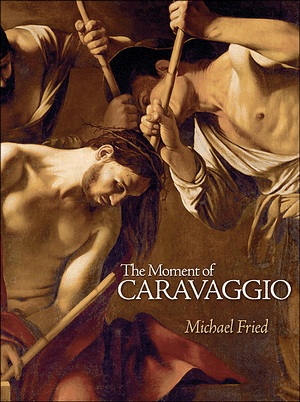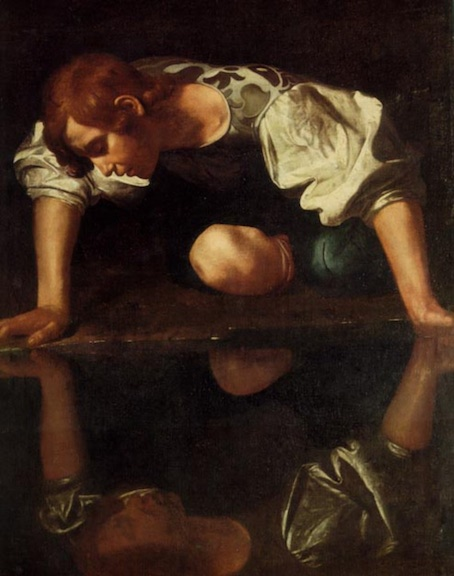Caravaggio brought the boys into the shadows. It is Caravaggio who serves as muse for the nubile Lotharios and sultry street hustlers who gaze seductively across the canvases and photographs of time.
A master of chiaroscuro, Caravaggio depicted boys (and Cupid) as sexual provocative beings. Returning the favor, The Moment of Caravaggio, by Michael Fried, Professor of Humanities at Johns Hopkins, brings Michelangelo Merisi da Caravaggio (1573-1610) out into the light in a thrilling exploration of the sixteenth-century Italian painter.
Based on the National Gallery’s Mellon Lectures in the Fine Arts, The Moment of Caravaggio examines the work and life of the Baroque master, focusing on Caravaggio’s groundbreaking use of realism and chiaroscuro – and the impact on his followers, as well as his great rival, Annibale Carracci. The ensuing account is as riveting as witnessing Antonio Salieri fume and connive at the mercy of Mozart’s genius.

Fortune Teller, by Michelangelo Merisi da Caravaggio, c. 1595, Oil on canvas. 93 cm x 131 cm. Louvre, Paris, France.
At more than three hundred pages and with nearly two hundred color illustrations, The Moment of Caravaggio brings to life the world of Caravaggio and his circle, including Orazio and Artemisia Gentileschi, Bartolomeo Manfredi, and Valentin de Boulogne.
For those who have wandered the streets of Roma, Firenze, or Venezia, long after the dogs have curled on their thresholds, this dazzling depiction of Baroque Italy will return you to an epoch where the night remains poised on the precipice between promise and folly.
Initially, you might place this book on your coffee table; don’t be surprised, however, to find yourself curled in an armchair, a bottle of Chianti at your side, reading late into the night – and marveling, not only at Carvaggio’s genius, but at Fried’s majestic rendering of the man and his world.

























